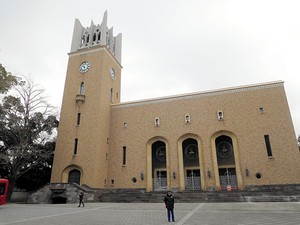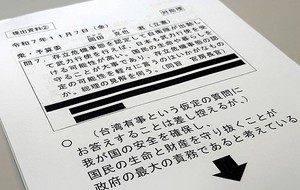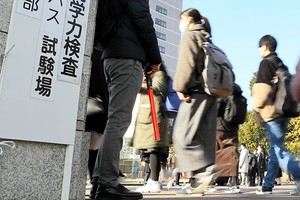Vox Populi, Vox Dei is a daily column that runs on Page 1 of The Asahi Shimbun.
April 22, 2023 at 15:08 JST
Annual G-7 summits are associated with the Group of Seven nations. But I also learned of the existence recently of an all-Japanese convention that calls itself “g-7.”
The number 7 in the context of the latter refers to Japan’s seven geographical regions--Hokkaido, Tohoku, Kanto-Koshin, Kinki, Chugoku, Shikoku and Kyushu. The g-7 membership consists of tiny villages from all those regions, taking turns to host conferences.
This is the brainchild of Koji Komura, 57, who runs a nongovernmental organization called “Chiisana Mura Sogo Kenkyusho” (Little village general research institute) in the village of Tabayama in Yamanashi Prefecture.
“I had my light bulb moment when the names of potential G-7 venues in Japan were very much in the news nine years ago,” Komura explained. He realized that if the heads of tiny villages got together--just like the leaders of G-7 nations--to talk about their shared problems, they may find clues to solving them.
He won the support of a number of villages, namely, Otoineppu (Hokkaido), Hinoemata (Fukushima Prefecture), Kitayama (Wakayaka Prefecture), Shinjo (Okayama Prefecture), Okawa (Kochi Prefecture) and Itsuki (Kumamoto Prefecture).
Since the first g-7 summit in Tabayama in spring 2016, the mayors have met five times to discuss such topics as how to encourage out-of-towners to visit and eventually move in, and ways to secure public transportation services. The summiteers also began to learn from their past mistakes by openly talking about them.
As members kept holding fairs to promote their local specialties such as “iwana” (a type of trout called char) and green tea, the events began to take on a permanent nature. This prompted the establishment of a “base” in Tokyo, which could also be used for conferences with representatives of universities and businesses taking interest in the g-7 initiative.
“The goal of g-7 is to ensure that every member village will continue to exist 100 years from now, with the villagers living happily even if their population is no more than 100,” Komura said.
His village of Tabayama shares borders with Tokyo and Saitama Prefecture. Its population, which once exceeded 2,000, is now down to about 500.
Still, when I walked around, I definitely sensed a unique kind of energy. People visit here for fishing and mountain climbing, and a campaign is in progress to promote the consumption of venison and “maitake” mushrooms.
I believe what I felt was the vibe that became the source of the determination of g-7 promoters to not just be satisfied with a one-time event but keep up an ongoing movement.
Forty-eight yars have passed since the first, then-G-6 Summit took place at the old Chateau de Rambouillet near Paris.
I pray for a long life for the g-7 summit that is packed with the intense enthusiasm of its member villages, tiny as they may be on the map.
--The Asahi Shimbun, April 17
(This article was carried only in extra online editions for newspaper holidays)

* * *
Vox Populi, Vox Dei is a popular daily column that takes up a wide range of topics, including culture, arts and social trends and developments. Written by veteran Asahi Shimbun writers, the column provides useful perspectives on and insights into contemporary Japan and its culture.




















A peek through the music industry’s curtain at the producers who harnessed social media to help their idols go global.
A series based on diplomatic documents declassified by Japan’s Foreign Ministry
Here is a collection of first-hand accounts by “hibakusha” atomic bomb survivors.
Cooking experts, chefs and others involved in the field of food introduce their special recipes intertwined with their paths in life.
A series about Japanese-Americans and their memories of World War II